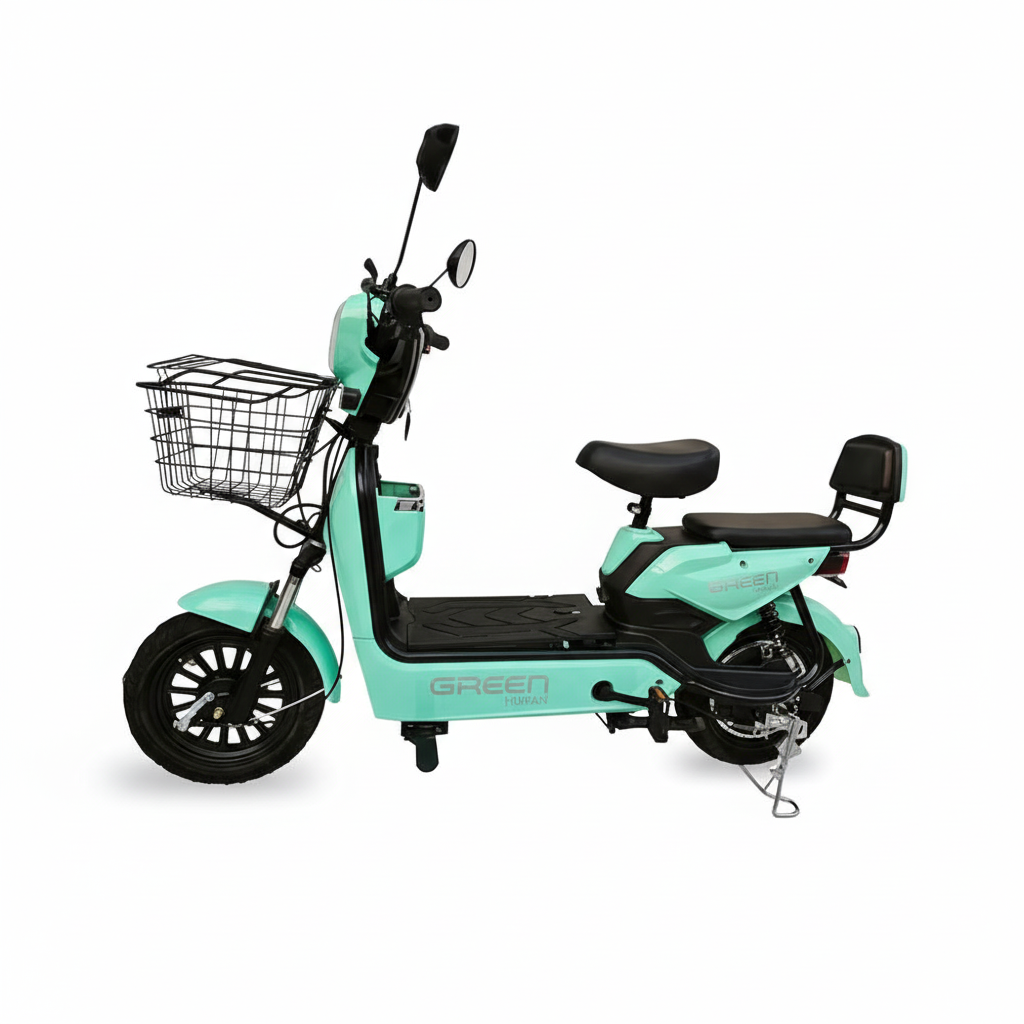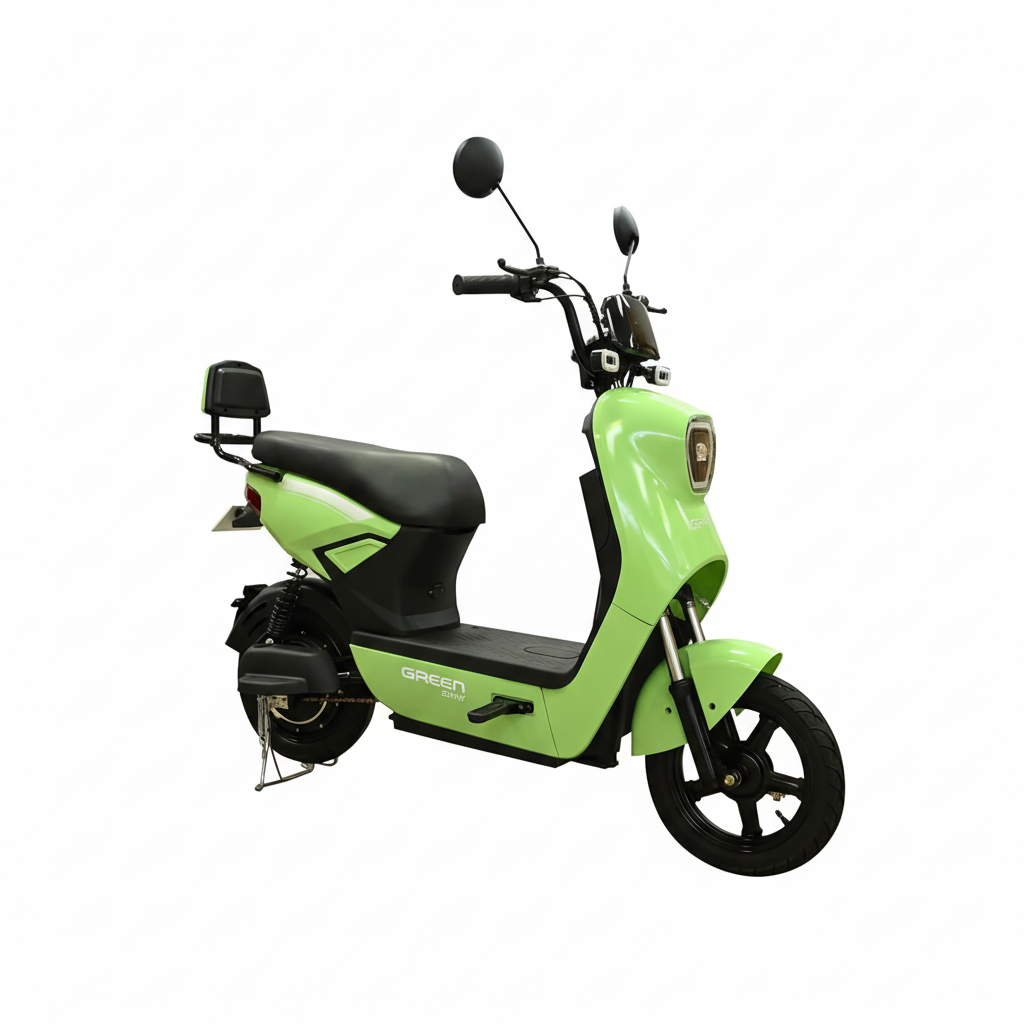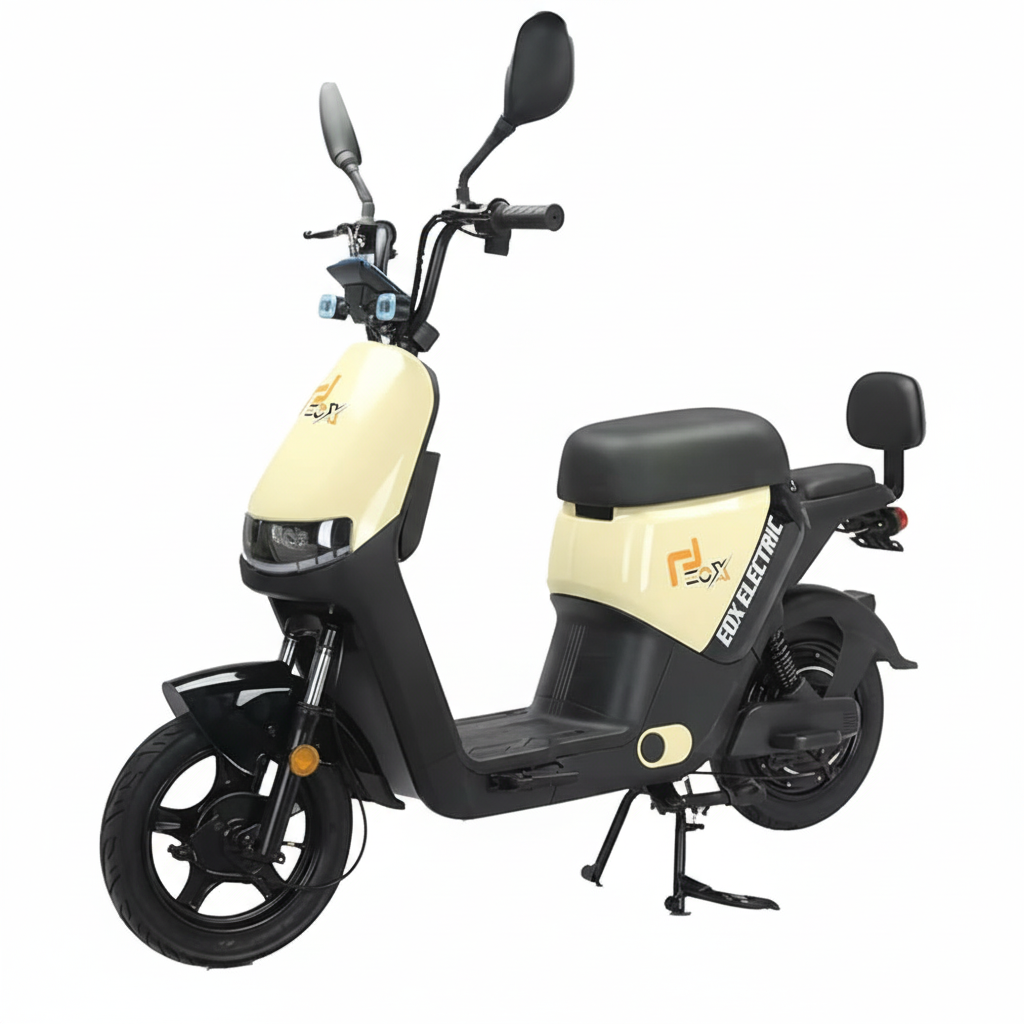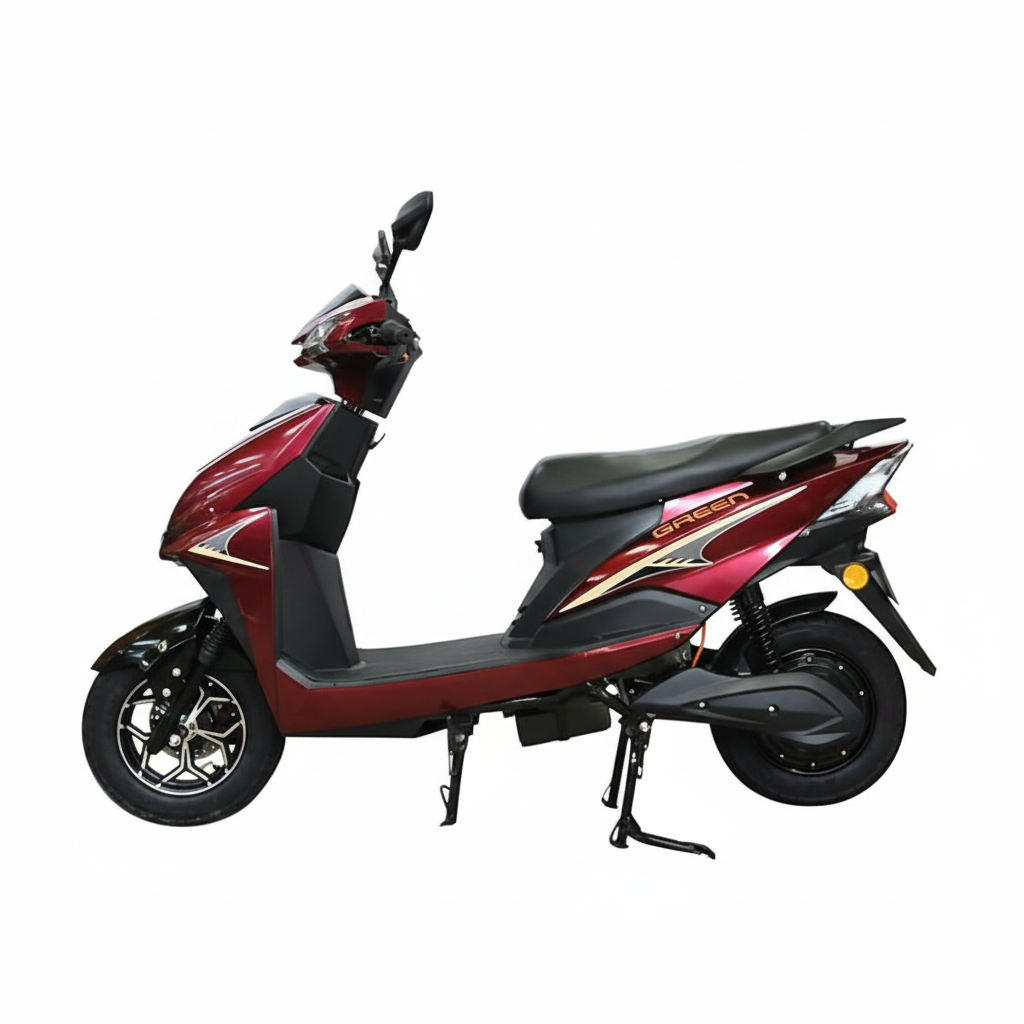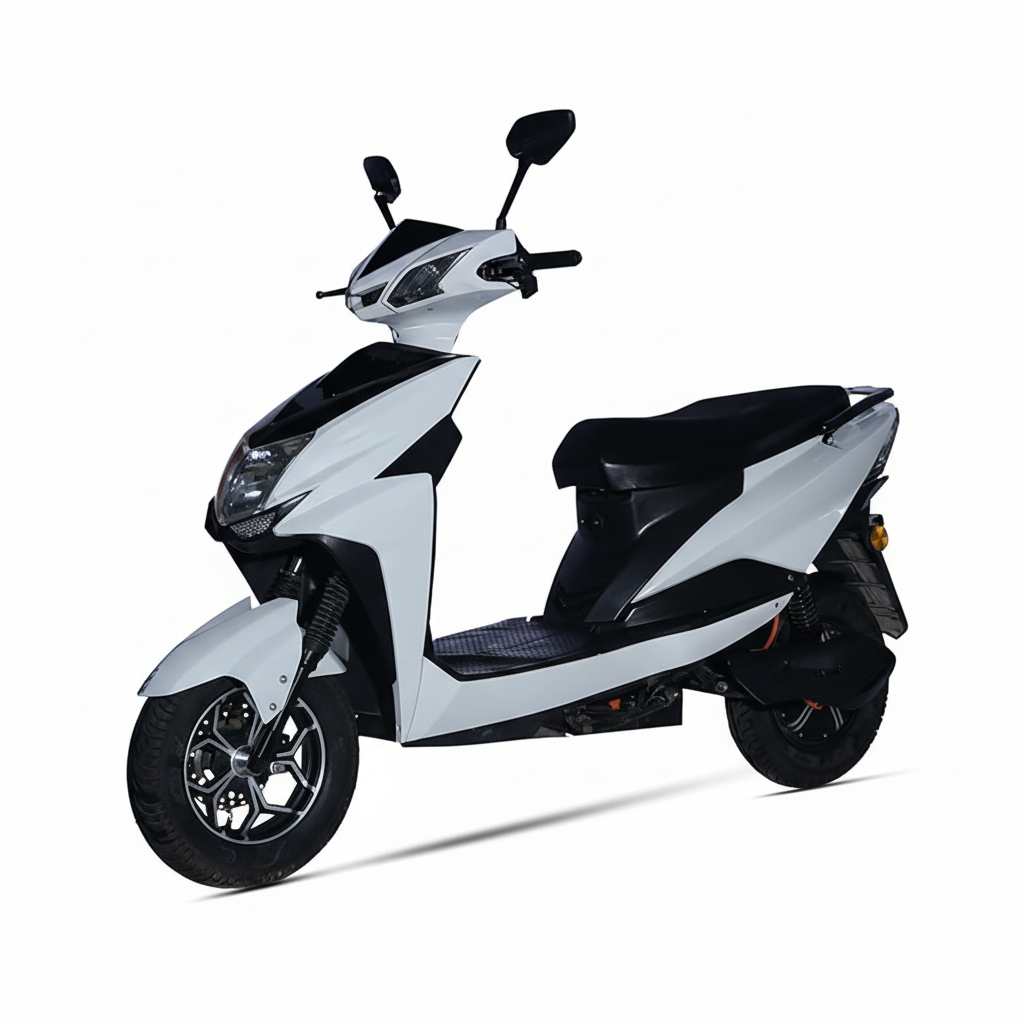
AMO Electric Scooter Single Light (Lead Acid)
The AMO Electric Scooter Single Light is a budget-friendly, non-RTO electric scooter that focuses on practicality and reliability. Powered by a traditional VRLA lead-acid battery, it delivers an impressive 60-70 km range. It is equipped with a comprehensive suite of safety features, including a front disc brake option, an anti-theft alarm, and dual LED headlights, making it a strong contender for cost-conscious urban commuters.
Key Features of the AMO Single Light
Excellent 60-70 km Range
Enjoy long rides with a range that comfortably handles daily commutes and errands, reducing the need for frequent charging.
Reliable Lead-Acid Power
The VRLA lead-acid battery offers a cost-effective and dependable power source that is easy to maintain for daily use.
Enhanced Braking System
Equipped with a rear drum brake and the option for a powerful front disc brake, providing reliable stopping power and enhanced safety.
Comprehensive Safety Suite
Ride with confidence thanks to features like an anti-theft alarm, hazard switch, and an automated parking brake for extra security.
Superior Visibility
Dual LED headlights and a Daytime Running Light (DRL) ensure you can see and be seen clearly, improving safety in all conditions.
No License Required
With a top speed of under 25 km/h, this scooter is classified as a non-RTO vehicle, eliminating the need for a driver’s license or registration.
Full Specifications: AMO Single Light
Performance & Motor
- Top Speed:< 25 km/h
- Range:60-70 km per Charge
- Motor:249 W High Efficiency BLDC
Battery & Charging
- Battery:VRLA Lead Acid Battery
- Charger:Portable Charger Included
- Warranty:12 Months
Design & Dimensions
- Weight:85 kg
- Dimensions (LxWxH):178 x 70 x 110 cm
- Frame:High-Strength Steel (HSS)
- Display:LED Speedometer
Brakes, Suspension & Tyres
- Front Brake:Disc / Drum Option
- Rear Brake:Drum
- Suspension:Telescopic Fork (Front), Spring Loaded Gas (Rear)
- Tyres:3.0×10″ Tubeless
Pros and Cons
Pros: What We Liked
- Very impressive 60-70 km range for a lead-acid scooter.
- Extremely affordable price point offers great value.
- Comprehensive safety package including an anti-theft alarm.
- Option for a front disc brake is a major safety advantage.
- Hassle-free ownership with no license or RTO requirements.
Cons: What to Consider
- Lead-acid battery is heavier (85 kg total weight) and has a shorter lifespan than lithium.
- Charging time is not specified.
- Rear lighting (tail light and indicators) uses basic bulbs.
- Strictly a low-speed vehicle, unsuitable for faster roads.
Is The AMO Single Light Right For You?
Who Is This Scooter For?
This scooter is perfect for the budget-conscious buyer who prioritizes range and safety over the latest battery technology. It is ideal for daily errands, short commutes, and for riders who want a reliable, no-fuss vehicle without any licensing requirements.
Who Might Consider Other Options?
Riders who prefer a lighter scooter with the convenience of a portable battery should look for lithium-ion models. Anyone needing to travel faster than 25 km/h should consider a high-speed, registered electric scooter.
Competitive Edge: Unbeatable Value
The AMO Single Light’s competitive edge is its unmatched value proposition. It combines a 60-70 km range—typically found in more expensive lithium scooters—with a robust safety package and the option of a front disc brake, all at an exceptionally low price point. This focus on delivering maximum range and safety for the cost makes it a standout choice for practical buyers.
Final Verdict
The AMO Electric Scooter Single Light is a testament to practical engineering. It proves that you don’t need to break the bank to get a non-RTO scooter with excellent range and top-tier safety features. While it uses traditional lead-acid technology, its performance and feature set make it one of the best value-for-money options on the market for hassle-free urban commuting.
Expert Rating
Performance & Range
4.3 / 5.0
Features
4.0 / 5.0
Design
3.8 / 5.0
Value for Money
4.8 / 5.0
Overall Score
4.2
